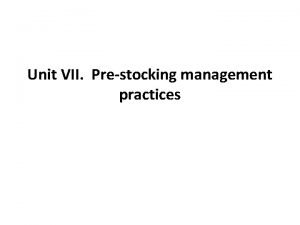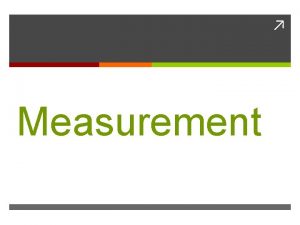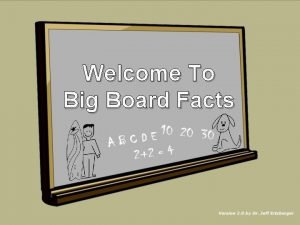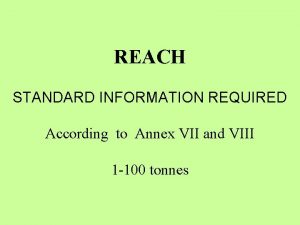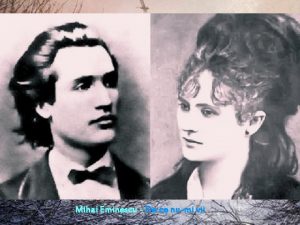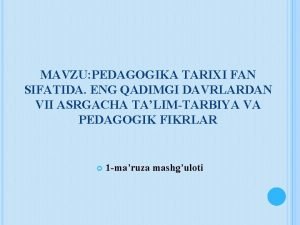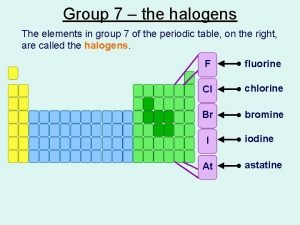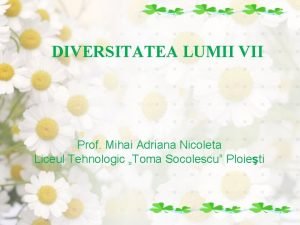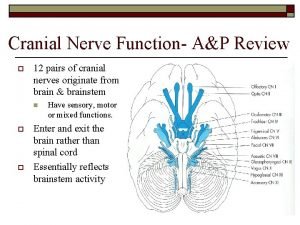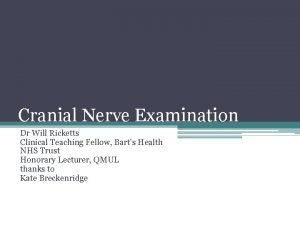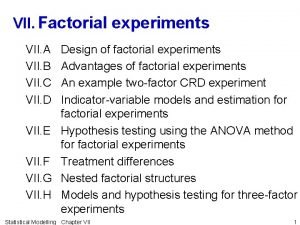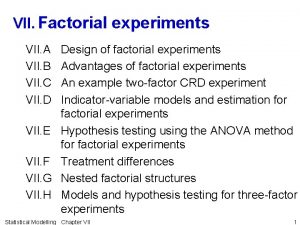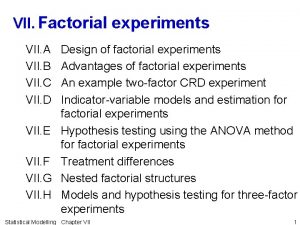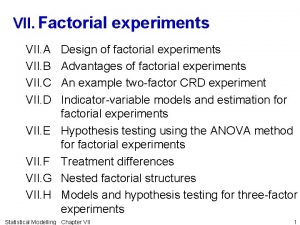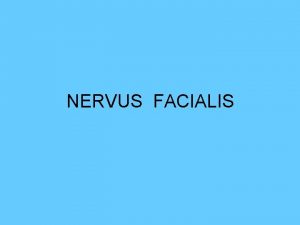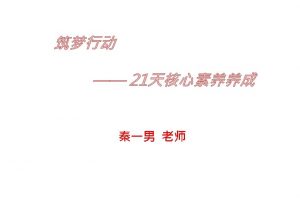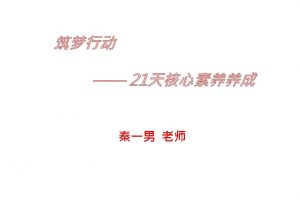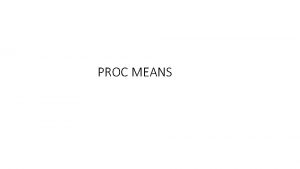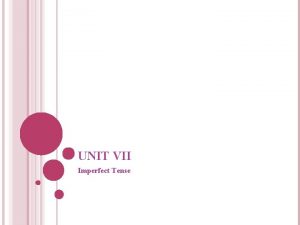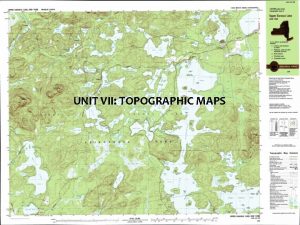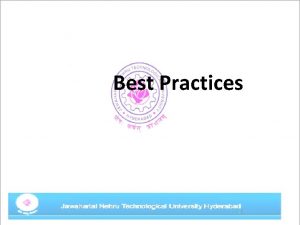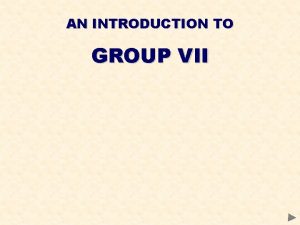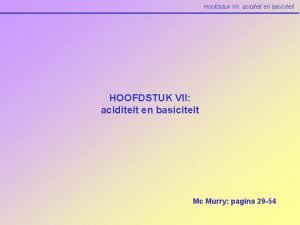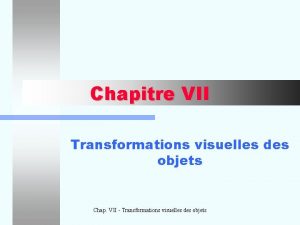Unit VII Prestocking management practices Prestocking management means
















- Slides: 16

Unit VII. Pre-stocking management practices

Pre-stocking management means management before stocking. Broadly it can be said that all the management practices involved in fish culture before stocking of fry in order to prepare the water body and its surrounding environment for living and growth of the fry.

Pre-stocking management • Preparation of pond • Eradication of undesirable fishes and aquatic weeds • Liming of pond • Water filling and • Basal manuring and fertilization

Pond preparation • • Pond drying / Dewatering Desilting /Bottom mud excavation Dike and canal reconstruction Ploughing / Tilling of the bottom

Pond drying / Dewatering The objectives of pond drying are • To kill undesirable species and predatory fishes from the pond • To help the works of dike and predatory fishes from the pond • To help for liming and fertilizing to the soil The pond bottom should be allowed to dry in sunlight at least for 15 days.

Desilting /Bottom mud excavation After dewatering the pond the excess mud of the bottom should be removed. After drying generally 10 -12 cm mud is removed It can be done by physical labor. Desilting process will remove the unwanted silt/bottom mud which is rich in nutrients without interference to the next crop. The removed materials have to be taken away from the ponds and not spread over the dike /bunds so that they are not washed back into the pond during rain. The pond bottom should be made even to allow effective rutting and harvesting of fish.

Dike and canal reconstruction • The broken pond dyke must be repaired and well raised to prevent the outward migration of fish under normal flooding situation. Grass or other vegetables can be planted on the dykes, which would help prevent erosion of dyke in monsoon months and alleviate turbidity problem as well. • It is very essential for the following reasons To prevent the pond from overflowing during the rainy season. To prevent the breaking of the dike. To give a certain shape to the pond. To maintain a certain slope of the pond. Process Dike reconstruction should be done during the end of the day season. February-April is the better time for drying and reconstruction of the pond. The inner side of the dike should cut properly or make smooth by hitting mud or soil. Now the dike must to be as high as it can prevent the flood water. The slope of the dike must be 1: 2 of the pond depth. The top of the pond dike should 3 feet wide It is necessary to repair the existing dike by filling new soil Well rooted grass should cultivate in the dike of the pond.

Ploughing / Tilling of the bottom • When the bottom soil takes the crack after removal of the bottom silt, tilling / ploughing the bottom soil at the top 5 -8 cm is done diagonally two times. Then it is dried for 3 -10 days.

Eradication of undesirable fishes and aquatic weeds • Control of aquatic weed: • Control of predators and undesirable species • Eradication of undesirable fishes

Control of aquatic weed Clean and excess aquatic weed free pond is very essential for getting a better production from it. All the aquatic vegetations (floating, submerged or emergent) should be removed from the pond. They hamper primary productivity by absorbing available nutrients from water and soil and hinder normal penetration of sunlight and mind action. It is necessary: To ensure the entrance of sufficient sunlight on the pond surface. To produce more natural food. To increase the fish production. Although some aquatic weeds are the source of food for some fishes such as grass crap all weeds are not necessary and beneficial for a pond. All aquatic weeds are nourished from the water and soil of a water body. It is very harmful for the reproduction and growth of plankton. More over sufficient sunlight cannot enter in to the pond because of excess aquatic weed which is also harmful for the growth of plankton. They also decrease the dissolve oxygen of water and make disturbance for the movement of fishes. There are three types of aquatic weeds found in a pond they are Floating Submerged Emergent

Control of predators and undesirable species • Predators are those species which take pray as these foods by hunting. As for example shoal, boal, chital etc. • Undesirable species Those species which are not expected during the culture of a specific or desirable species and those which grow naturally in a pond with cultured species are known as undesirable species or weed fishes. • Reasons for control Predatory fishes eat the fry of cultured species as for e. g. Predators eat 1012 kg of other fishes for their 1 kg growth. Undesirable species share the food of cultured species. Undesirable species breakout disease for other cultured species.

Eradication of undesirable fishes

Liming The basic objectives of liming in the pond are • To maintain the p. H of soil and water above 6 • To increase the function of fertilizer • To remove the turbidity of water • To control decrease and toxin gases. • To make the pond environment clean • To increase the productivity Advantages: • Lime neutralizes soil acidity and creates a buffer system to prevent marked diurnal fluctuations of the water from acidic to alkaline conditions. • Destroys fish pathogens and their intermediate life stages. • Converts unsuitable acidic condition of water to suitable alkaline condition. • Neutralize iron compounds which are undesirable in fish ponds. • Promotes mineralization of soil which is desirable in fish ponds. • Settle excess dissolved organic matters and thereby reduces incidences of oxygen depletion • Acts as determinants and improves hygienic • Apart from other advantages, the buffering action of calcium is the most important. Lime serves both the prophylactic and therapeutic purposes. Lime treatment for ponds should be done before initial manuring.

Water filling When a pond is fully prepared for stocking of fish then water filling is done. Initially before manuring/fertilizing the water depth should be maintained as low as possible so that the effect of nutrients for natural food production is fully realized. After 1 to 2 weeks of manuring / fertilizing the water depth has to be raised to the required level before stocking the seeds for fish culture. The average water depth in a pond is an important factor in fish culture. This generally depends on various factors like rainfall, evaporation losses, seepage, use of water for irrigation, etc. If necessary, water may be let in from nearby available sources during summer or drained out during monsoon to maintain desirable water depth in the pond.

Manuring / Fertilizing Zooplankton and phytoplankton are the main natural food of fish. Objective of fertilizing • To produce natural food. • To increase the amount of nitrogen, phosphorous, potassium etc. Types of fertilizing Organic manures are directly used for the development of natural food. For the pond culture cow dung is better to use. During pond preparation poultry manure can also be used. Inorganic fertilizer Generally urea can be used at 20 -30 kg/ha. It should be dissolved in water and spread over the surface of the pond. Similarly 10 -15 kg/ha of super phosphate is used during preparation of pond. In undrainable ponds where the frequent change of water is a Impossible. The physico-chemical properties of pond water governing the biological production cycle are more or less a reflection of the bottom soil. Therefore, the fertilizer requirement varies depending on soil productivity levels.

• • • Organic manuring, is being important as a means of adding the nutrients in water is also equally important for improving the soil texture. If there is shortage of organic manures, the application of inorganic fertilizers is recommended. A generalized schedule can be adopted in the abundance of detailed soil and water analysis data. The proper mode and timing of application of fertilizers are very important in order to get good results as well as avoid water quality problems. Manures / fertilizers should be applied only when the other environmental conditions of water are suitable such as sunshine, good oxygen content and adequate water level etc. The best way of applying is to dissolve the fertilizers in water and spray throughout the pond surface. The best time for manuring is morning with 9 -10 o’clock. Application of manure / fertilizer in late afternoon or evening may cause oxygen depletion in the early hours of the following day because of faster decomposition at night. During fully cloudy and rainy days, manuring has to be suspended. In case of algal blooming the manuring fertilization has also to be lessened. Manure and fertilizers are best utilized when the desired total dose is given in small portions. Daily manuring with small quantity has been found best for keeping optimum level of fish production period. For example, the best utilized manure is from the animals released together with fish under the integrated livestock – cum – fish culture system. The average water depth in a pond is an important factor in fish culture. This generally depends on various factors like rainfall, evaporation losses, seepage, use of water for irrigation etc. If necessary, water may be let in from nearby available sources during summer or drained out during monsoon to maintain desirable water depth in the pond heavy accumulation of metabolites at the bottom of ponds may deplete oxygen in the pond water during low water depths, adversely affecting fish growth. However, such problems generally not occur in seasonal ponds.
 Prestocking
Prestocking Unit 10, unit 10 review tests, unit 10 general test
Unit 10, unit 10 review tests, unit 10 general test Triangle quadrilateral pentagon hexagon octagon
Triangle quadrilateral pentagon hexagon octagon Morphe means in metamorphism
Morphe means in metamorphism Meta means change and morph means heat
Meta means change and morph means heat Biodiversity conservation meaning
Biodiversity conservation meaning Bio means life
Bio means life Tetraphosphorous decasulfide formula
Tetraphosphorous decasulfide formula Fernando vii
Fernando vii Reach annex vii
Reach annex vii Mihai eminescu de ce nu vii
Mihai eminescu de ce nu vii Pedagogik fikrlar
Pedagogik fikrlar What are halogen atoms
What are halogen atoms Organisme talofite
Organisme talofite Light tight dynamite cranial nerve
Light tight dynamite cranial nerve Lr6 so4
Lr6 so4 Henryk vii tudor
Henryk vii tudor
